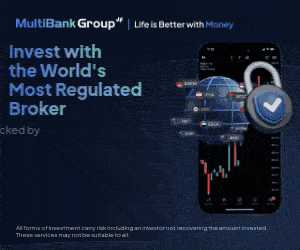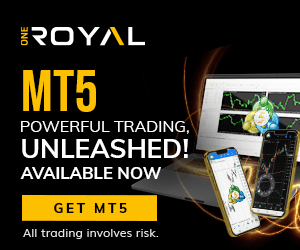Are you worried about committing to strict rules or hesitant about the pressure of passing an evaluation process? Maybe the upfront costs of one option or the time investment for the other have you stuck in decision model. Perharps you’re eager to start trading right away, or perhaps you’re looking for a cost-effective way to prove your skills first.
Choosing the right funding model can feel like a big decision, especially when you’re trying to match it to your trading style and goals.
Instant Funding and Evaluation Challenges are two popular paths traders take, but which one works best for you? Each model has its own perks and drawbacks, and finding the right fit could make all the difference in your trading success.
Let’s break it down so you can make a smart, confident decision that suits you. .
💰 Instant funding = fast access, higher upfront costs.
⏳ Evaluations = time-intensive but affordable.
📋 Instant funding = strict rules, proven strategies.
🎯 Evaluations = flexible, perfect for skill-building.
Which Model is Best for You?
| Instant Funding | Evaluation Challenges | |
|---|---|---|
| Ideal For | Traders with solid, proven strategies | Traders seeking an affordable entry |
| Key Advantage | Immediate access to trading capital | Flexibility with fewer restrictions post-funding |
| Key Drawback | Higher upfront costs and stricter rules | Requires time and effort to pass evaluations |
| Best For Those Who | Can handle upfront costs and adhere to strict rules | Are patient and willing to complete evaluations |
Ultimately, it’s like choosing between a marathon and a sprint, both can get you to the finish line, but the journey is different.
Which one feels more like you
Table of Contents
Toggle💰 Higher upfront costs? Go Instant Funding!
⏱️ Want immediate access? Instant Funding is for you.
✅ Prefer proving your skills first? Try Evaluations!
📉 Concerned about strict rules? Evaluations offer flexibility.
🕒 Willing to invest time? Evaluations might be your answer.
Understanding Instant Funding Accounts
What Are Instant Funding Accounts?
Instant funding accounts enable traders to bypass the evaluation phase entirely. For a set fee, traders gain immediate access to live capital, eliminating any delays. This appeals to traders with proven strategies who value speed and simplicity. Unlike evaluation models, where traders undergo rigorous profit-targeted testing, instant funding focuses on providing direct capital access.
Advantages of Instant Funding
The primary benefit of instant funding accounts is immediate capital. Experienced traders, for instance, could receive $50,000 to start trading within hours of registration. Having this convenience allows traders to capitalize on current market conditions without waiting for an evaluation phase to conclude.
Another distinct advantage is the scaling plans offered by some firms. For example, if an account grows by 10%, traders may automatically receive more capital. This setup is particularly favorable for professionals employing steady, profitable strategies.
Challenges of Instant Funding
Despite its convenience, instant funding comes with challenges like consistency rules and trailing drawdown limits. These stringent measures control trader behavior and reduce excessive risks. For example, a trader who generates most of their profits in one day may struggle to meet the even distribution required by certain rules.
Additionally, because instant funding skips the learning curve of evaluations, novice traders may find themselves unprepared for managing live funds effectively. This can lead to rushed decisions and costly mistakes.
Exploring Evaluation Challenges
How Evaluation Challenges Work
Evaluation challenges involve a structured process where traders demonstrate their skills. Typically, this consists of achieving profit targets within specific risk parameters, such as maintaining daily drawdowns below a set percentage. Most challenges follow two steps, where consistent success results in a fully funded account.
Advantages of Evaluation Challenges
The lower upfront costs attract traders who prefer accessible entry into prop trading. A fee of $200, for example, might allow a trader to attempt a $100,000 evaluation account. Unlike instant funding, traders are not risking their entire initial capital from day one.
Additionally, evaluations encourage traders to develop discipline. By adhering to strict rules, traders gain invaluable experience in managing risk. Upon passing, the rules often relax, providing greater freedom and flexibility in strategy execution.
Limitations of Evaluation Challenges
The time-intensive nature of evaluations can be a drawback. Traders unwilling to wait weeks or months to complete all steps may find the process frustrating. Furthermore, falling short of the evaluation’s goals requires starting over, which can be costly in terms of time and morale.
Comparing Consistency Rules and Trailing Drawdown
Consistency Rule Drawbacks
The consistency rule often stands out as a significant limitation in instant funding accounts. It requires traders to maintain evenly distributed profits across trading days. For instance, a trader who earns 70% of their profits in one day may violate the rule, even if they remain highly profitable overall. This condition penalizes volatile but strategic styles like swing trading or news trading.
Example 2:(15% consistency rule)
Suppose you generate $10,000 in total profits during a payout period.
The maximum profit from any single trading day should not exceed $1,500 (15% of $10,000).
If you have a day where you make $2,000, you will not be eligible for a payout until your total profits increase enough to bring that day’s contribution below 15%.
Challenges of Trailing Drawdown
Trailing drawdowns, another major drawback, impose restrictive pressure on traders. This rule adjusts the acceptable loss limit upward as profits increase. For example, a trader starting with $50,000 and growing their balance to $55,000 might have their drawdown threshold raised from $47,500 to $52,500. A subsequent position loss could exceed this limit, ending their account despite overall profitability. Such rules discourage long-term risk-taking and significantly limit account flexibility, particularly for traders focused on maximizing gains.
Example 2: On a $5,000 account assuming you have a 4% traillig down rule and prop firm decides to lock it.
If your account grows to $5,200 (4% profit), the trailing drawdown locks at $4,800 (4% below the initial balance).
From this point onward, the drawdown will no longer adjust upward, even if your account grows further.
What Constitutes a Trading Day?
Understanding how a trading day is defined by a prop firm is crucial for traders aiming to meet requirements like consistency rules and profit distribution. Typically, a trading day refers to any day when a trader places and closes at least one trade within the official market hours. However, definitions can vary depending on the firm.
For instance, some firms may count partial trades, where positions are opened but not closed, as a trading day. Others may exclude trades held overnight, meaning positions must be closed before the end of the trading session to qualify. Consider a scenario where a trader executes a single trade one day but holds it for two days. Some firms might count this span as a single trading day while another could account for it as two, depending on their policies.
For example, a prop firm may require you to complete at least 5 trading days before requesting a reward. Each trading day must meet the 0.5% profit threshold to count. If you trade for 4 days and meet the profit threshold, but fail to trade on the 5th day, you won’t be eligible for a payout.
Example 2:
For a $5,000 account, 0.5% of the initial balance is $25.
If you trade on Monday and make $30, that day qualifies as a trading day.
If you trade on Tuesday but make only $20, that day does not qualify as a trading day.
Over a payout period, you need to accumulate at least the required number of trading days (e.g., 5 days for some accounts) to request a reward
These distinctions matter significantly for strategies designed around specific profit goals or timing. Misinterpreting a trading day could lead to violations of firm rules, such as uneven profit distribution across sessions. Therefore, traders should carefully review the firm’s rules before starting to avoid confusion and ensure compliance. Their ability to align their trading approach with the firm’s specifications can directly impact performance and payouts.
News Trading Limitations
While news trading is allowed for some prop firms, there may be profit caps of the initial account balance for trades opened or closed within certain minutes before or after high-impact news events.
Example: On a $5,000 account, if you open a trade 1 minute before a major news release, the maximum profit you can make from that trade is $50 (1% of $5,000).
Account Termination for Rule Violations
Hard Breaches (e.g., exceeding the daily or total drawdown limits) result in immediate account termination.
Soft Breaches (e.g., exceeding the 2% risk per trade limit) may result in warnings or profit deductions, but repeated violations can lead to termination.
Leverage Adjustments:
For most firms, leverage may be reduced temporarily based on your trading behavior or risk management.
For example, Forex: Reduced from 1:100 to 1:50 if risk management is deemed poor. Leverage can be restored once you demonstrate better risk management.
Fees and Refunds
The initial fee for the account is non-refundable, but some prop firms may offer a refund after achieving a certain number of payouts (e.g., 4 payouts).
Suggested Firms Offering Instant Funding
Some prop firms specialize in providing instant funding opportunities. These firms cater to experienced traders in need of immediate capital. Examples include those offering accounts with $5,000 to $100,000 in starting balance upon successful registration. While their operational structure may vary, their focus remains on fast capital delivery with rules such as trailing drawdown or consistency.
It is important to research the terms and conditions carefully. Traders should assess elements such as profit-sharing splits, risk limits, and scaling plans. Firms emphasizing transparency and fair rules tend to align better with profitable trading strategies.

Your “Preference”
If you’re a consistent, steady trader, the Instant Funding Account might be your jam, it rewards discipline and gives you immediate access to capital. But if you’re a high-risk, high-reward trader or someone who thrives under pressure, the Step Challenge could be a better fit since it allows for more flexibility in profit distribution.

Final Thoughts
Both instant funding and evaluation challenges cater to different trader profiles. Instant funding offers quick access with higher upfront costs, while evaluations provide lower-cost entry but demand time and discipline. Traders should weigh their experience level and goals to select the model that best supports their success. Rules and parameters may change, and updates are often announced via the firm’s website or social media platforms. It’s important to stay informed to avoid unintentional violations. Ultimately, aligning with the right funding approach can shape long-term trading outcomes effectively.
Disclaimer:
All information has been prepared by TraderFactor or partners. The information does not contain a record of TraderFactor or partner’s prices or an offer of or solicitation for a transaction in any financial instrument. No representation or warranty is given as to the accuracy or completeness of this information. Any material provided does not have regard to the specific investment objective and financial situation of any person who may read it. Past performance is not a reliable indicator of future performance.















